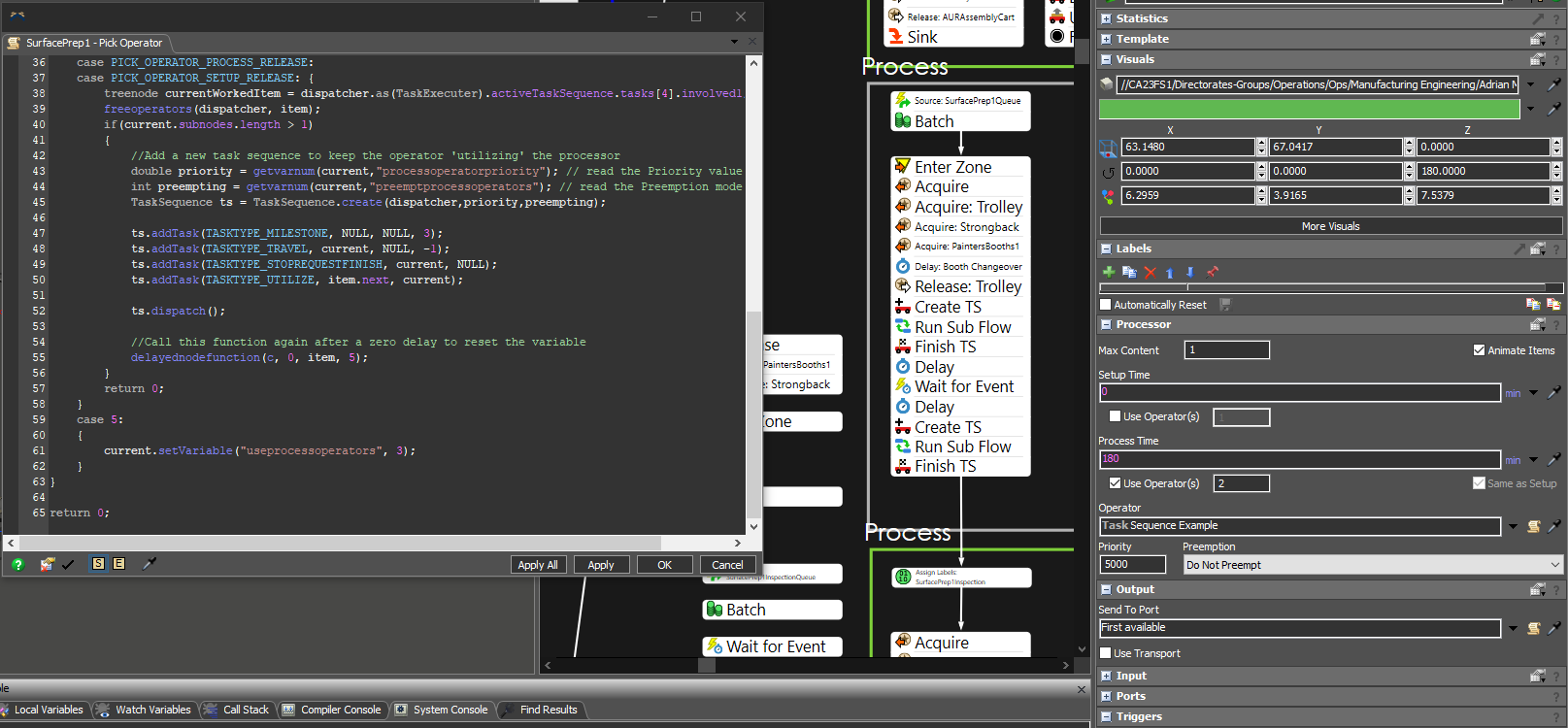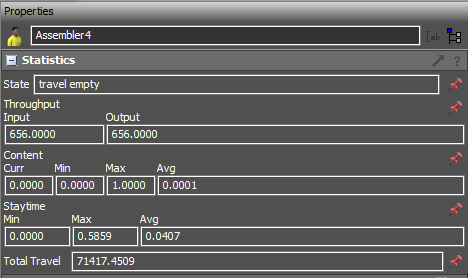Hello, I have a model running with multiple shifts with multiple objects being processed at one time on the processor. All of my processors are connected to a dispatcher with a center port which I referenced within the Operator field; however, when I ramp up production (increase inputs) I will eventually need to add more shifts for specific operators like assemblers, testers, inspectors, and so forth.
I'd like to understand what the difference is between reference the center port connected to a dispatcher (current.centerObjects[1]) vs. a Task Sequence Example? Also, does the Task Sequence Example still reference the dispatcher I have connected with a center port on that certain processor; therefore, allowing the dispatcher to still handle which tasks should be handed out depending on which shift is active?
Another thing to add, when I kept my Operator reference to current.centerObjects[1] I experienced something similar to this post where my processor seems like it is stuck when I know I have a sufficient amount of operators implemented in the model.
Processor Waiting for Operator but Operator is Stuck - FlexSim Community
Machine waiting operator already utilized - FlexSim Community
I did receive some assistance in Machine waiting operator already utilized - FlexSim Community, but an error occurred (please see below). I suspect it's because I have objects finishing at the same time on the processor, so if I can have the updated code for this issue, then that would be great.
What I was provided:
The error after implementing:
I have version 23.0.2.
5/22/2024 11:56am ---
After running the model with the Task Sequence Example referenced in the Operator field, the operator that looks like is assigned to the processor to process the item now has a state of travel empty instead of utilize. Is there a way to fix this?
Thank you,



